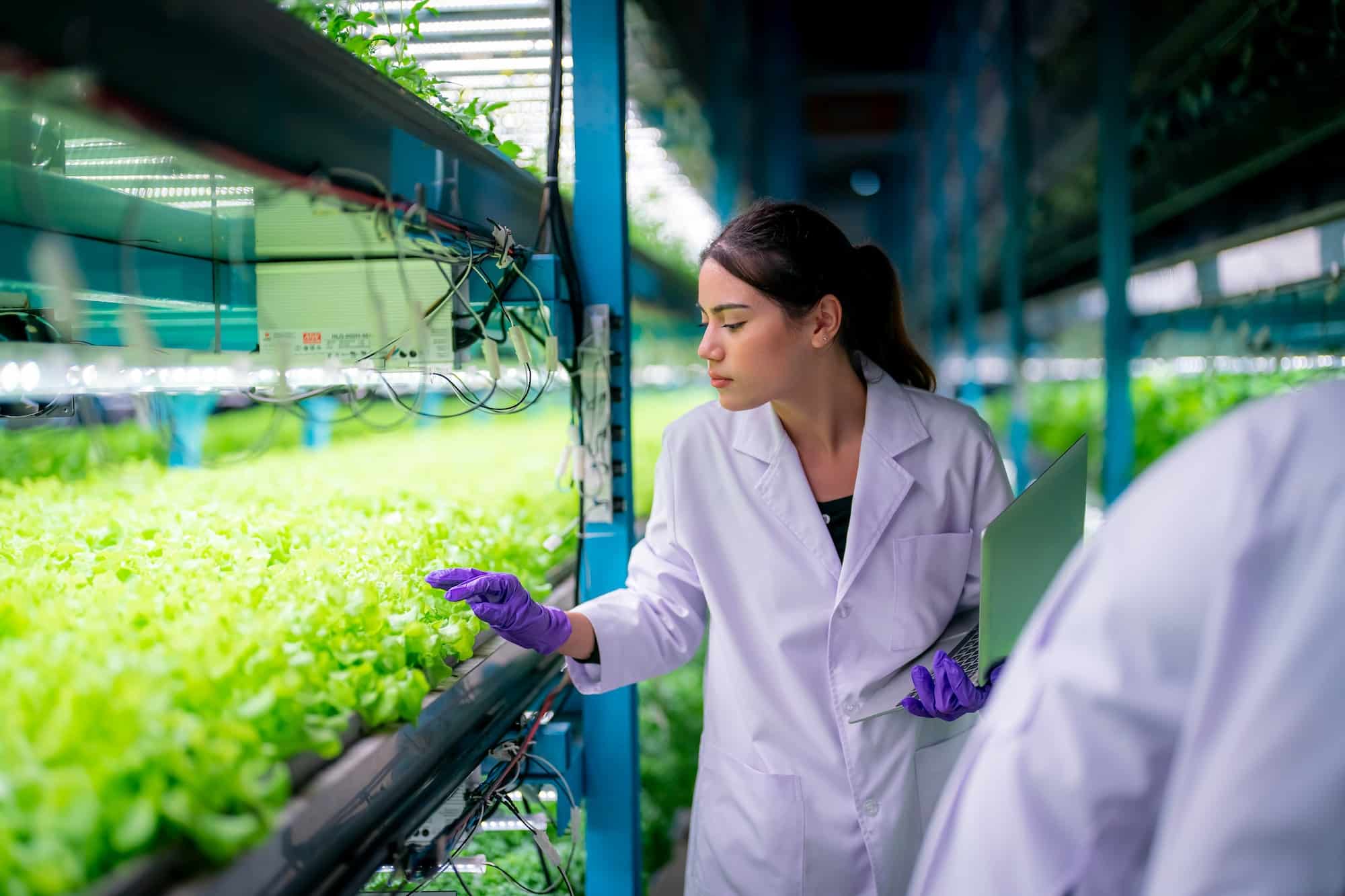As the saga of urbanization unfolds, the connection between food and farming is becoming increasingly abstract. In this age of limited space and burgeoning food demands, innovative farming techniques are more important than ever. One such innovative method is vertical gardening, which, when combined with indoor farming systems, can unlock a whole new world of fresh, healthy, year-round produce right in your kitchen. In this article, we will explore the best ways to integrate a vertical farm into your kitchen, focusing on growing herbs, a staple ingredient in many cuisines.
Understanding the Concept of Vertical Farming
Before you delve into the world of vertical gardening, it’s important to understand the concept. By definition, vertical farming is the practice of producing food in vertically stacked layers or on vertically inclined surfaces. The fundamental advantage of vertical farming is its space efficiency. The vertical orientation allows for a higher density of crops, which can lead to greater yield and productivity.
A découvrir également : How Can You Design a Comfortable Home Workspace for Graphic Designers?
The indoor vertical farming system has been a game changer, transforming how we think about food and its production. It encapsulates hydroponic systems, where plants are grown in mineral nutrient solutions in water, without soil. This technique is not only environmentally friendly but also enhances the growth of plants, making it an ideal choice for an indoor garden.
Choosing the Right Location for Your Vertical Garden
The first step in setting up an indoor vertical farm in your kitchen is to identify the best location. The primary consideration is light. Like all plants, herbs require light for photosynthesis, the process that allows them to grow. If you have a sunny windowsill, it’s an ideal spot for your vertical garden. However, if natural light is lacking, you can install energy-efficient LED grow lights to ensure your plants receive the necessary light.
En parallèle : What’s the Most Efficient Use of Corner Space for Home Storage in a Victorian Terrace?
The vertical garden should not obstruct your kitchen activities. An empty wall, the side of your refrigerator, or even a tall, free-standing rack can serve as the base for your vertical garden. Bear in mind that the location should also have access to water for easy watering of your plants.
Setting Up the Hydroponic System
The next step is to set up the hydroponic system, the heart of your indoor vertical farm. There are various hydroponic systems available, each with its benefits and drawbacks. For beginners, the wick system is the best choice. It’s simple, inexpensive, and does not require electricity. The plants are placed in containers with wicks that draw nutrient-laden water from a reservoir to their roots.
For a more advanced system, you might consider the nutrient film technique (NFT). In NFT, a thin film of nutrient solution flows over the roots of the plants, providing them with continuous nourishment. However, this system requires a pump and electricity, making it a bit complex to set up and maintain.
Selecting and Growing Your Herbs
The final step is to select and grow your herbs. Herbs are a great choice for an indoor vertical garden due to their compact size and usefulness in the kitchen. Start with versatile herbs like basil, parsley, cilantro, and thyme. These herbs are relatively easy to grow and can be used in a variety of cuisines.
Once your herbs are planted, care for them by regularly checking the nutrient solution levels and adjusting the light as necessary. Remember to harvest your herbs regularly to encourage new growth. With the right care and attention, your indoor vertical farm will provide you with a continuous supply of fresh herbs, enhancing your food with home-grown flavors.
Reaping the Benefits of Your Indoor Vertical Garden
An indoor vertical garden is not only a smart way to maximize your kitchen space but also promotes a healthy lifestyle by providing fresh, chemical-free food. The joy of plucking your own herbs right before cooking is unparalleled. Also, watching your plants grow and thrive can be a great stress reliever.
Indoor vertical gardening also presents an excellent opportunity to introduce children to farming. It instils in them a sense of responsibility and the importance of sustainable living, giving them skills that will last a lifetime.
In summary, integrating an indoor vertical farm into your kitchen is a rewarding journey. It requires careful planning, but the result is worth every effort. With the right approach, you can transform your kitchen into a lush, green, and productive space, bringing the joy and benefits of gardening indoors.
Expanding Your Indoor Garden Beyond Herbs
While starting with herbs is a great way for beginners to delve into vertical farming, it’s important to remember that your indoor garden can grow beyond just herbs. Leafy greens like lettuce, spinach, and kale can thrive in a vertical farm, providing you with fresh salads year-round. Similarly, vegetables such as tomatoes, peppers, and cucumbers can also be grown vertically.
The key to expanding your indoor garden is understanding the specific needs of each plant. Different plants require varying amounts of light, water, and nutrients. For example, leafy greens thrive in a cool, controlled environment and require less light than fruiting plants like tomatoes.
Some plants may require a different type of hydroponic system. For instance, an aquaponics system, which combines conventional aquaculture with hydroponics, may be better suited for larger plants. This system uses the waste produced by fish or other aquatic animals to supply nutrients to the plants.
Incorporating a variety of plants in your indoor garden can make your kitchen a vibrant and productive space. Not to mention, the availability of fresh produce year-round can greatly enhance your culinary experience.
Maintaining Your Indoor Vertical Garden
Maintaining an indoor vertical garden is a commitment, but with the right tools and knowledge, it can be a rewarding experience. Regularly check the nutrient solution levels and ensure the pH is balanced. Keep an eye on the grow lights, making sure they are providing the right amount of light without overheating the plants.
Pay attention to the plant growth and look out for any signs of diseases or pests. Early detection can prevent widespread damage to your indoor garden. If you notice any issues, act quickly using organic pest control methods or adjusting the nutrient solution as necessary.
Cleaning your hydroponic systems is crucial to avoid any build-up of harmful bacteria or fungi. This not only ensures the health of your plants but also prolongs the life of your hydroponic system.
With proper care and maintenance, your indoor vertical garden can be a sustainable and productive addition to your kitchen. It not only provides a continuous supply of fresh produce but also adds a touch of green to your living space.
Conclusion
Urbanization and limited space should no longer be obstacles to farming. With vertical farming, you can transform your kitchen into a year-round indoor garden. It’s an innovative way to sustainably produce fresh herbs and other produce, no matter where you live or the time of the year.
The journey of setting up an indoor vertical farm may require careful planning and maintenance, but the rewards are numerous. From the joy of harvesting your own herbs to the convenience of having fresh produce right in your kitchen, indoor vertical farming can greatly enhance your culinary experience.
In the United States and many other parts of the world, vertical farms are gaining popularity. As more people embrace this innovative farming technique, kitchens could become the new farmlands, revolutionizing our food system for the better.
Whether it’s growing a simple herb garden or a variety of leafy greens and vegetables, vertical farming is a practical, sustainable, and rewarding way to grow food right in your own kitchen. So why wait? Start your indoor vertical garden today and experience the joy of farm-to-table cooking all year round.











